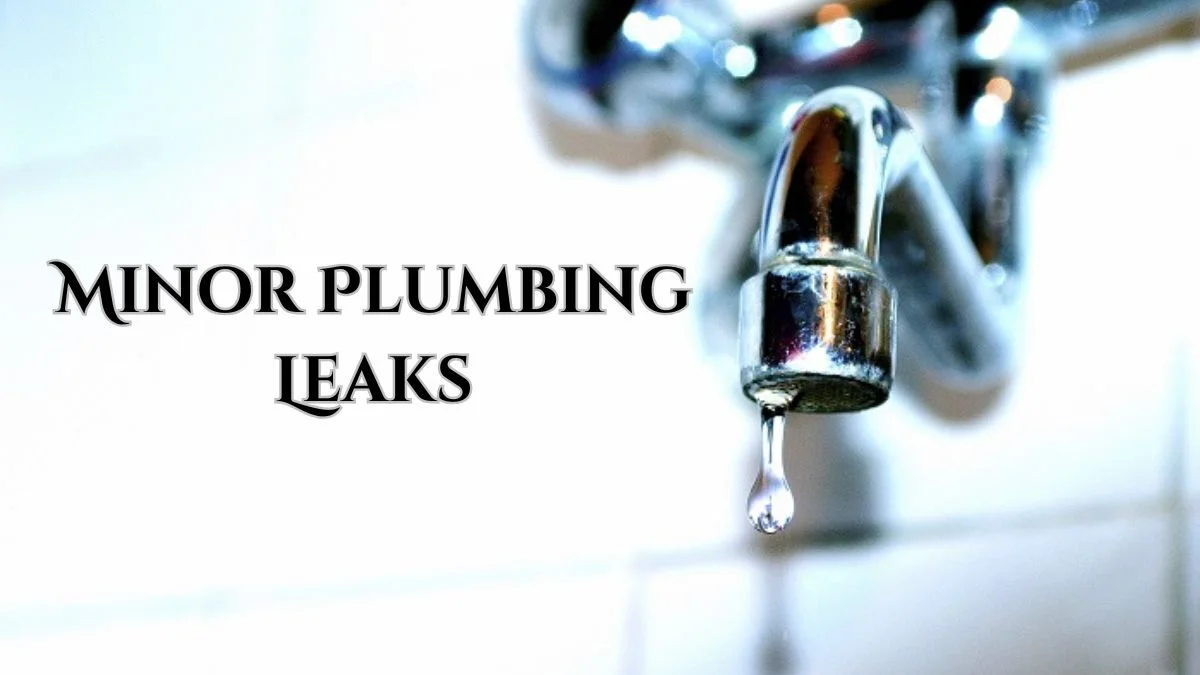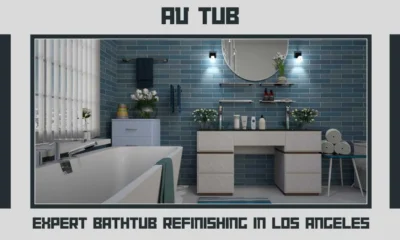HOME IMPROVEMENT
The Hidden Risks of Ignoring Minor Plumbing Leaks in Your Home

A small plumbing leak might seem like a minor inconvenience, easily dismissed or put off for another day. However, these seemingly insignificant issues can escalate into major problems, leading to costly repairs, health hazards, and even structural damage to your property. Addressing leaks promptly is essential to maintaining the safety, efficiency, and longevity of your home’s plumbing system. In this article, we explore the hidden risks of ignoring minor plumbing leaks and provide actionable advice to protect your property.
Why Minor Leaks Should Never Be Overlooked
Leaks often start small, manifesting as a slow drip from a faucet or a barely noticeable puddle beneath a pipe. Homeowners might underestimate their significance, but even minor leaks can have far-reaching consequences. Understanding the potential risks underscores the importance of timely action.
1. Escalation into Major Damage
What begins as a small leak can grow into a significant issue if left unaddressed. Over time, pressure changes and pipe wear can cause the leak to worsen, resulting in bursts or flooding. The cost of repairing a burst pipe far exceeds that of fixing a minor leak, making early intervention a wise investment.
2. Increased Water Bills
A single dripping faucet can waste hundreds of gallons of water annually. Even a slow leak contributes to noticeable increases in your water bill. Identifying and repairing leaks promptly saves money and conserves water, an essential resource.
3. Structural Damage
Water can seep into walls, floors, and ceilings, weakening structural components and causing warping, rot, and decay. Hidden leaks, particularly in areas like basements or crawl spaces, can compromise the integrity of your home’s foundation.
4. Health Hazards
Moisture from leaks creates an ideal environment for mold and mildew growth. These fungi can spread quickly, releasing spores that affect indoor air quality and pose health risks, especially for individuals with respiratory issues or allergies.
Common Causes of Plumbing Leaks
Understanding the causes of leaks helps homeowners take preventive measures. Some of the most frequent culprits include:
- Corroded Pipes: Over time, metal pipes can corrode, leading to weak spots and eventual leaks.
- High Water Pressure: Excessive water pressure strains pipes, increasing the likelihood of leaks.
- Temperature Fluctuations: Sudden changes in temperature can cause pipes to expand and contract, weakening joints and connections.
- Aging Fixtures: Old faucets, valves, and fittings may develop leaks due to wear and tear.
- Clogs: Blockages in pipes can create pressure imbalances, causing leaks at weak points.
Signs of Hidden Leaks
Not all leaks are immediately visible. Hidden leaks can persist unnoticed, causing damage over time. Look out for these signs to detect leaks early:
- Unexplained Water Stains: Discoloration or damp spots on walls, ceilings, or floors may indicate a hidden leak.
- Musty Odors: Persistent dampness leads to unpleasant smells, a hallmark of mold and mildew.
- Low Water Pressure: A drop in water pressure can signal a leak or blockage in your plumbing system.
- Unusual Sounds: Hissing or dripping noises behind walls or beneath floors suggest water escaping from pipes.
- Unexplained Spikes in Water Bills: A sudden increase in water usage without changes in household habits may point to a hidden leak.
DIY Leak Detection Tips
While some leaks require professional intervention, homeowners can take initial steps to identify potential issues:
- Monitor the Water Meter: Turn off all water fixtures and appliances, then check the water meter. If it continues to move, you likely have a leak.
- Inspect Fixtures and Connections: Examine faucets, toilets, and exposed pipes for visible signs of dripping or pooling water.
- Use Food Coloring: Add a few drops of food coloring to the toilet tank. If color appears in the bowl without flushing, the toilet has a leak.
- Check Outdoor Plumbing: Inspect hoses, spigots, and irrigation systems for leaks or damage.
Professional Leak Detection and Repair
While DIY methods can identify some leaks, professional plumbers have the tools and expertise to locate and repair hidden issues effectively. Techniques include:
- Thermal Imaging: Infrared cameras detect temperature differences caused by water leaks behind walls or floors.
- Acoustic Listening Devices: These tools amplify the sound of water movement, pinpointing the exact location of leaks.
- Video Pipe Inspections: Miniature cameras inserted into pipes provide a clear view of blockages, cracks, or corrosion.
Ares Plumbing emphasizes the importance of routine inspections to identify and address minor leaks before they escalate. Their team’s expertise ensures accurate diagnostics and long-lasting solutions for homeowners.
Consequences of Neglecting Plumbing Leaks
Failing to address leaks promptly can result in a cascade of problems, affecting your finances, health, and property:
1. Higher Repair Costs
Ignoring a small leak often leads to extensive damage that requires costly repairs. Water-damaged walls, floors, and foundations may necessitate significant restoration work, far exceeding the expense of early intervention.
2. Decreased Property Value
Persistent plumbing issues can reduce the value of your home. Potential buyers are likely to view unresolved leaks as a red flag, leading to lower offers or difficulty selling the property.
3. Energy Inefficiency
Leaks in hot water pipes force your water heater to work harder, increasing energy consumption and utility bills. Addressing these leaks improves energy efficiency and reduces costs.
Preventative Measures to Avoid Leaks
Prevention is always better than cure. Implement these strategies to reduce the risk of leaks:
- Regular Inspections: Schedule annual plumbing inspections to identify potential problems early.
- Upgrade Aging Pipes: Replace old or corroded pipes with modern, durable materials.
- Install Pressure Regulators: These devices maintain safe water pressure levels, protecting your pipes.
- Insulate Pipes: In colder climates, insulation prevents pipes from freezing and bursting.
- Practice Proper Maintenance: Clean drains regularly, avoid flushing non-degradable items, and address clogs promptly.
The Role of Routine Maintenance
Routine plumbing maintenance is the cornerstone of leak prevention. Professional services like those offered by Ares Plumbing provide peace of mind by ensuring your system is in optimal condition. From thorough inspections to timely repairs, their expertise keeps minor leaks from becoming major headaches.
Environmental Impact of Plumbing Leaks
Beyond personal inconvenience, leaks have broader environmental implications. Wasted water contributes to resource depletion, while untreated leaks can contaminate local ecosystems. Addressing leaks promptly supports sustainability and reduces your ecological footprint.
Why Choose Ares Plumbing?
Ares Plumbing is committed to providing reliable and efficient solutions for all your plumbing needs. With years of experience and a focus on customer satisfaction, their team ensures that Minor Plumbing Leaks are resolved quickly and effectively. By combining advanced technology with professional expertise, Ares Plumbing helps homeowners protect their properties and enjoy long-term peace of mind.
Conclusion
Minor plumbing leaks are often dismissed as trivial, but their hidden risks make them a serious concern for homeowners. From escalating damage to increased costs and health hazards, the consequences of neglecting leaks can be far-reaching. Proactive leak detection, timely repairs, and routine maintenance are essential to safeguarding your home’s plumbing system. Ares Plumbing encourages homeowners to prioritize these steps, ensuring a safe, efficient, and leak-free environment for years to come.
-

 BIOGRAPHY7 months ago
BIOGRAPHY7 months agoBehind the Scenes with Sandra Orlow: An Exclusive Interview
-

 HOME1 year ago
HOME1 year agoDiscovering Insights: A Deep Dive into the //vital-mag.net blog
-

 HOME1 year ago
HOME1 year agoSifangds in Action: Real-Life Applications and Success Stories
-

 BIOGRAPHY1 year ago
BIOGRAPHY1 year agoThe Woman Behind the Comedian: Meet Andrew Santino Wife




























